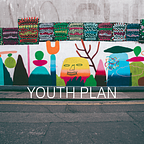The benefits and needs to engage youth in spatial urban planning: Universal design for social justice and children as “sensitive environmental indicators’’
This post is written by our project member Oriol García Antúnez (University of Copenhagen).
Last October, representatives from nations all over the world met, this year in Glasgow, to unify efforts and set targets to stop climate change at COP26. Despite the efforts to include diverse genders and ages to the discussions, female and youth representation was once more ridiculously low, and not necessarily meaningful either. Yet, street demonstrations vindicating the need to act in this climate emergency, and other societal problems, are usually led by youth.
“It is quite frustrating that we are part of the delegation but that we do not have access to the negotiations table”
— said youth representative from DUF in COP26, Emma Susanna Turkki.
But why is youth participation so necessary in decision-making? In this blog entry, we will briefly go through some of the reasons for and benefits of including and respecting younger voices in spatial urban planning.
Youth with their eyes in the future: Guardians of intergenerational justice
Youth of the present, and those yet to be born, will be future adults dealing with all the consequences of today’s decisions. It is no wonder eco-anxiety is disproportionately growing among children, adolescents and young adults.
“Eco-anxiety can be defined as a chronic fear of environmental doom”
— as defined by Sussane Clayton and her colleagues.
Youngsters are aware and extremely concerned about the climate, and some of them have channeled their frustration and energy into activism. Rather than being an illness that needs to be “cured”, recent research suggests eco-anxiety should be understood as a reaction stemming from a deep sense of empathy for nature and a planet that is being gradually destroyed.
Likely because of the direct repercussions present decisions will have on their future lives, youth activism have long been claiming intergenerational equity. Youth can therefore be seen as the guardians of intergenerational justice, as they are the segment of society bringing the time perspective into decision-making, which usually tends to focus on the short-term, techno-economic aspects of sustainability.
Trust in decision-making and empowerment from early stages
Youth have been long claiming to feel excluded from decisions adults are making, which will have clear effects on their futures. They usually feel not only excluded, but also disinvested, completely hopeless, and have very litle trust in their government and adult generations.
“Why should I want to live in a world that does not care about us?”
— child interviewed by Caroline Hickman.
Listening to and acting in accordance with their desperate calls for action is therefore key if we are to restore their trust in policy and to reduce their feeling of helplessness. But this must be done carefully and in a meaningful way, as it could be counter-productive. Instead of shedding light on “children’s voices framed through adult perspectives”, youth must be directly involved in decision-making, shifting the paradigm from subjects to agents of change. By including them in decision-making, and making the outcomes of their participation apparent, they are likely to feel more heard, respected, empowered and capable of shaping their immediate physical environment.
Experts suggest that youth are in a stage of fast psychological, physical and social development, and hence developing positive attitudes towards decision-making processes during this stage of their lives will impact the type of citizen they will become in the future. This is key for a happy, resilient and well-functioning society, which will otherwise not be possible in the future.
Universal design for social justice: children as “sensitive environmental indicators’’
Including youth in decision-making can also be a source of new perspectives to understand and tackle certain problems our society is facing. Many social and ecological challenges threaten urban environmental quality as cities grow bigger and densify. Results from “The Children’s City” project, described youth and children as “sensitive environmental indicators’’. They suggested that children need an environment accessible to pedestrians and guaranteed by the concerns and social responsibility of all. In turn, such an environment would not only satisfy the needs of youth, but also those of elderly people, residents with disabilities, and in general would improve the residential environmental quality. This idea of “sensitive environmental indicators’’ recalls elements of “universal design”:
“Universal Design is the design and composition of an environment so that it can be accessed, understood and used to the greatest extent possible by all people regardless of their age, size, ability or disability”.
Following this line, including young voices in spatial urban planning can be a tool to bring in elements of “universal urban planning” that will not only benefit the needs of youth, but also of those who are usually not heard or represented in decision-making.
Planning with youth has the ultimate aim to experiment with, report and collect the success of innovative methods to boost this much needed meaningful engagement of youth in spatial urban planning.
This post was authored by Oriol García Antúnez who works as a research assistant at the Department of Geosciences and Natural Resource Management at the University of Copenhagen. Oriol will soon begin his path as a doctoral student.
